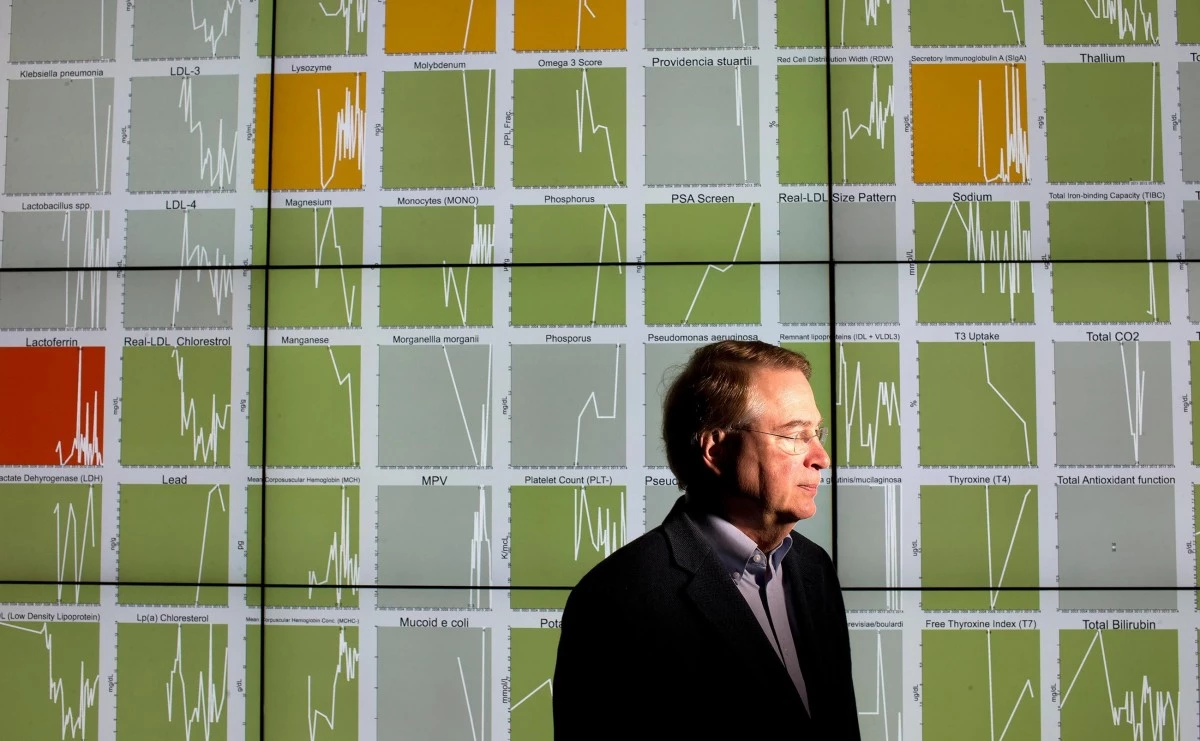Jetsetting Without the Jet: How Technology Enabled a PBS NewsHour Story on Enabling Technologies

San Diego, Calif., Feb. 1, 2016 — Riddle me this: When a national network reporter based in Washington D.C. is covering a story in Las Vegas but also needs to interview a source at the University of California, San Diego, which technology does he need to get the job done?
“Passenger jet” isn’t exactly the wrong answer, but if the interview is with UC San Diego Prof. Larry Smarr, it’s certainly not the only answer.
Smarr is often in demand for media interviews about his participation in the so-called “Quantified Self” movement to democratize medicine, having diagnosed his own Crohn’s Disease using data he gathered from blood tests, stool samples and wearable devices. But as director of the University’s California Institute for Telecommunications and Information Technology (Calit2), Smarr’s schedule doesn’t always allow for those interviews to be in-person.
That was the dilemma that unfolded last week for PBS NewsHour science reporter Miles O’Brien. O’Brien was determined to feature Smarr in his story about the Consumer Electronics Show in Las Vegas, which was packed to the rafters with QS-inspired wearable devices. He needed to show the potential of such devices, and Smarr — who completely changed his lifestyle and lost a considerable amount of weight during his ongoing QS experiment — was the ideal candidate for an interview. Smarr also has lots of personalized health data he's able to bring up on a suite of high-resolution displays.... but those displays are hundreds of miles away from Las Vegas in San Diego.
That’s where a completely different technology came in: the virtual telepresence technology that Smarr’s institute, Calit2, is known for. Using Calit2’s high-definition studio at its UC San Diego division, the Qualcomm Institute, Smarr was able to work with Calit2 Managing Producer/Director Hector Bracho and Senior Producer Director Alex Matthews to record a 45-minute video interview as well as a demo in the institute’s Virtual Room or VROOM. The result was footage that made it seem as if Smarr was interacting with O’Brien in the same room even though O’Brien was still back on the Vegas strip.
Bracho used a Skype-enabled laptop to connect to O’Brien, who asked Smarr questions as if he were sitting across from him and also provided some guidance as to the types of visual imagery he was looking for. O’Brien was even able to “direct” the shoot from afar: While shooting, Bracho and Matthews held the laptop up to the camera’s viewfinder to show the O’Brien what was in the shot and allow him to make any adjustments.
Within just two hours of shooting, the interviews were up and running on the Calit2 servers. Bracho worked with PBS to select the right compressed file format and then transferred the files to the News Hour team via a file-sharing protocol that very same day.
Previously, Bracho’s team had set up a “radio version of this scenario for Smarr after National Public Radio requested an interview with him — Smarr took a phone call from the NPR reporter but his replies were recorded in a high-quality audio file format in the Qualcomm Institute’s HD studio. The Calit2 team then sent the audio file to the NPR sound engineers, who mixed it into the final broadcast.
The total turn-around from initial phone call to broadcast was less than a week: Smarr got the request over the weekend, the Calit2 team shot the piece on Tuesday and it aired the subsequent Friday.
Although this approach can’t be used for live interviews, the result in the case of both audio and video broadcasts is as high-quality as it would have been had the reporters flown with their crews — a much more expensive and time-consuming undertaking. (See O’Brien’s final report here; Prof. Smarr appears at 6:26).
So what did O’Brien have to say about the experience?
”Why am I always having to fly to get interviews, when I can just Skype?” he asked. “Well, that works if the person you are interviewing has an in-house HD studio and experienced camera crew."
Related Links
Will real-time health data for consumers add up to healthier living? (PBS NewsHour story)
Media Contacts
Tiffany Fox
(858) 246-0353
tfox@ucsd.edu
